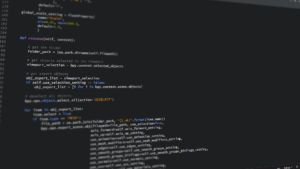
Image by JohnsonMartin on Pixabay
Python is among the most prominent programming languages globally and has been used to build many web applications. While the language is considered secure, its increasing popularity comes with a rise in security vulnerabilities that impact Python application security.
Authorization and authentication concerns, injection attacks, and cross-site request forgery attacks are some of the security threats developers should safeguard against. With the right security measures, developers can ascertain that their code is secure, error-free, and optimized. Discussed below are Python security best practices for developers.
1. Static code analysis
Static code analysis involves assessing an application's source code without executing it. It examines the code's syntax, dependencies, and structure to detect:
- Security flaws
- Potential errors
- Bugs
- Coding standard violations
- Code smells and other problems in the codebase
Static code analysis offers multiple benefits for developers, including:
- Catching bugs early: This procedure helps developers identify security issues early in the application development cycle, minimizing the possibility of time-consuming and costly fixes
- Detecting code security problems: It identifies security threats and recommends ways to alleviate them
- Minimizing technical debt: The technique specifies hard-to-maintain, inefficient, or insecure code areas, reducing technical debt
With the help of code security tools, including static code analysis tools for Python, developers can catch potential issues and enhance code quality.
2. Input validation
Software applications depend on user input to function well. Failure to validate user input makes applications vulnerable to:
- Cross-site scripting
- SQL injection
- Buffer overflow attacks
Input validation involves checking the input to ensure its validity and that it attains specific expected prerequisites before processing. Validating user input helps ensure the data the applications process is error-free and accurate. There are several strategies for input validation, including:
- Data type checking: It ensures the input is similar to the expected data type
- Length checking: It ascertains that the input achieves a specific length requirement
- Range checking: It ensures the input is within an acceptable valuable range
- Consistency checking: It guarantees the input matches the data in the application
- Format checking: It ascertains that the input matches a particular format
3. Error handling
Even after validating user input, errors can still happen. As such, it's imperative to implement error-handling techniques. This may include looking for errors at each code stage and then taking suitable action to ensure they don't cause more issues by identifying and dealing with errors in an organized manner. Consistent error logging is one of the error-handling strategies developers can use to easily detect and fix errors.
4. Keep dependencies up-to-date
Security vulnerabilities hidden in software dependencies constitute a significant threat to applications' integrity, functionality, and privacy. These threats can be exploited via different techniques, letting attackers:
- Steal sensitive information
- Gain unauthorized access
- Implement arbitrary code
- Disrupt services
Failure to update dependencies can result in severe consequences that affect not only an application's functionality but also stability and security. Dependency updates are essential because they usually contain vital security patches, compatibility improvements, and bug fixes that resolve vulnerabilities and ascertain seamless operation. Routine dependency updates enhance Python security by:
- Patching known vulnerabilities to protect applications from data breaches and potential attacks
- Ensuring compliance with data protection and security regulations
- Closing security gaps to reduce attack surface, which makes it hard for attackers to exploit weaknesses
Endnote
Python's popularity as a programming language has led to an increase in security risks that impact application functionality and stability. However, implementing these Python security best practices for developers can help ensure secure, error-free code.
